#watching John talk about the most depressing world events and saying his funny little jokes is one of my favorite things
Explore tagged Tumblr posts
Text
Me: Damn, I've had such a stressful day. I need to do something to relax, something that will really help lift my spirits.
Also me: *puts on the Death Penalty episode of Last Week Tonight* This oughta do it!
#literally had the worst week and its transferred over to this week#and to wind down I watch old episodes of LWT#watching John talk about the most depressing world events and saying his funny little jokes is one of my favorite things#I need to be studying for my Anthro exam in two days but instead I'm watching John talking about MLM#this is obviously the better choice though#last week tonight#last week with john oliver
9 notes
·
View notes
Text
Chapter 8: Babes in the Wood
In this last hurrah of explicit homages to animation of the past, the most obvious discussion point is Merrie Melodies and its ilk: Babes in the Wood is essentially a full-episode reference to the bouncing musical shorts of yore, where everything can sing’n’dance and the villain is a blustery bozo who’s defeated with a sight gag. If we expand to children’s entertainment in general, as we did with Greg’s Beatrix Potter episode, then The Wizard of Oz is our logical next step: the song welcoming him to Cloud City owes everything to Dorothy’s introduction to Munchkinland, complete with the fact that our hero has just entered a dream.
And look, there’s nothing wrong with talking about the obvious. But as we near the end, I think it’s a little more interesting to instead explore the very beginning. So let’s go back to a newspaper cartoonist in New York—the one who inspired fellow New York newspaper cartoonist John Randolph Bray to become an animator, which in turn led fellow New York newspaper cartoonist Max Fleischer to become an animator, because it turns out that just like the birth of superhero comics a few decades later, the birth of American animation hinged on print artists who dreamed big in the city that never sleeps.
A boy named Zenas was born in Michigan on September 26, 1871. Or maybe he was born there in 1869. Or maybe he was born in Canada in 1867. He said one thing, and a biographer said another, and census data says another, and I wasn’t there. It’s similarly unclear when or why he started going by his middle name, but by the time he took his first job at age 21 (or 19 or 17) as a billboard and poster artist in Chicago, he was calling himself Winsor McCay. They sure did know how to name ‘em in the 19th century.
McCay began his newspaper career as a freelancer, but moved to New York in 1903 to work for the New York Herald, where he wrote a variety of comics before hitting it big with Little Sammy Sneeze. McCay’s art was always brilliant, but his gag work was formulaic to a fault: the joke for Sammy Sneeze was always the same, he would sneeze and ruin everything right before the last panel. That devotion to formula would continue in his second big comic Dream of the Rarebit Fiend, where a fantastical events would occur for ever-changing characters before the lead woke up in the last panel, revealing it was a dream.
That second formula was the basis of McCay’s masterpiece. Already a successful cartoonist in the two short years since he’d moved to New York, his fame skyrocketed with Little Nemo in Slumberland, which used the same “wake up at the end” formula but with recurring characters and a running story. He toyed with the medium like none had before, playing with panel arrangement and innovating the portrayal of motion in comics, and his art skills only improved with this full-color strip. His success led to the vaudeville circuit, where he turned the act of drawing into a performance, and this combination of stage entertainment and his continuing comic work led him to seek new ways to dazzle the crowds.
By 1910, the earliest animated shorts had already started to emerge, and McCay was inspired by pioneers like James Stuart Blackton and Émile Cohl to try animating the characters of Little Nemo. Under Blackton’s direction, McCay singlehandedly drew around four thousand fully colored frames to produce his first animated cartoon, presented at the tail end of a filmed short about said cartoon in 1911. As mentioned, animated shorts were already a thing. But none of them looked anything like this. (If you’re concerned that there might be racist caricatures in it, don’t worry, there definitely are, McCay had a lot of strengths but overcoming garbage prejudices was not one of them).
The sheer quality of his work, continuing with the legendary Gertie the Dinosaur, directly led to the invention of the rotoscope as a means to mass-produce cartoons of similar finesse. The influence of Winsor McCay over animation as we know it is hard to overstate (and let’s stress again that this was his side gig, and he was just as influential over comic art): as crazy as it sounds, it’s safe to say that Over the Garden Wall would not exist if not for a story about the whimsical adventures of a little boy who traveled across a land of dreams from his bed.
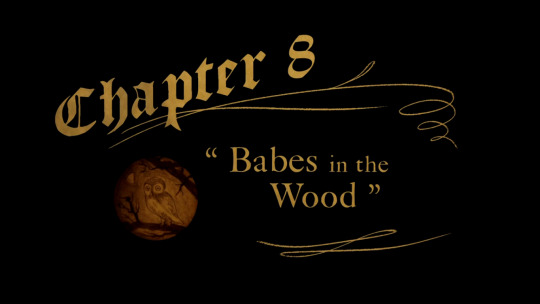
“Where’s Greg, Wirt?”
Babes in the Wood is delightful and goofy and lighthearted exactly once.
In the same way our fourth-to-last episode mirrored our fourth, this third-to-last episode mirrors our third: Chapters 4 and 7 focus on Wirt, but 3 and 8 are Greg’s. It’s not simply a matter of who the main character is, but what these episodes are about: Greg’s love of fun clashing with his drive to help others. Both times he's spurred by the desire to help others to go off on his own, both times he gets distracted by whimsical wonders involving funny animals and physical humor, and both times he ends up deciding to help out anyway. But despite switching his goal from making the whole world a better place to just helping his brother, the stakes are actually far higher now, so the fun has to be that much more fun if we want the full horror of the ending to sink in.
There’s no tonal shift in the series that’s more devastating than Greg falling prey to the Beast after nearly ten minutes of goofiness in Cloud City. It turns a moment of welcome relief from the growing tension of Wirt’s despair into a dagger in the heart, and the knife is twisted when we learn in our next episode what the Unknown truly is.

That despair is evident well before Wirt explicitly gives up. We get our second opening in a row featuring Beatrice in a hopeless search, and things aren’t much better for the boys. All sense of progression from the first episode feels lost, with Wirt reverting to mumbling poetry and Greg reverting to Rock Facts. Their boat is an outhouse and Greg uses a guitar as an oar, because (if you’ll pardon my French) they’re up shit creek without a paddle. When they land, Greg’s victorious bugle is a ridiculous sign of hope, but he soon drops it in the same way he abandons the guitar: in Schooltown Follies he takes instruments to help others, but this time he loses them.
Wirt’s frustration with Greg threatened to boil over in The Ringing of the Bell, only to be cooled when the Woodsman interrupts them. This time there’s no such interruption, so after Greg’s total failure to read the room gets to be too much, his brother finally snaps. It crucially isn’t entirely unjustified, as Greg’s antics might be funny to us but have not been appreciated by Wirt, and despite Greg’s age excusing his lack of emotional intelligence, it’s still gotta be frustrating for a teen to deal with that behavior nonstop. And Wirt’s “tirade” reflects his depression, because he doesn’t even seem that angry: he doesn’t shout or rave, he’s just openly irritated as he argues that they’ll be lost forever. This is apathy and fatigue, because he’s lost the energy to be furious.
But the most chilling part of the exchange isn’t Wirt cruelly blaming Greg for their mess, or abandoning their search. It’s when, after Wirt asks if they can give up, Greg responds with a chipper “You can do anything if you set your mind to it!”, a sentiment that the Beast will fiendishly repeat verbatim while tricking Greg. It’s such a generic positive expression that Greg hangs a lampshade on it, but it shows the darker side of the power our minds have over our well-being. Sure, it’s a great lesson that focus and dedication can help us achieve our dreams, but if we use that focus and dedication towards self-destructive behavior, there’s no limit to how badly we can hurt ourselves.
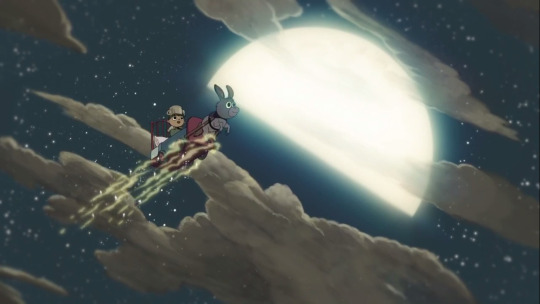
After a goofy sort of prayer (incorporating lines from the classic Trick or Treat poem, which will become super relevant an episode from now), Greg is whisked away by so-creepy-it’s-funny cherubim to the score of a so-overwrought-it’s-funny song. His flight aboard the bed/cart pulled by a donkey across the sky feels legitimately magical, but we soon switch to the surreal world of 1930′s songs and physics.
Cloud City is such a stark contrast to the tone of the episode so far that it instantly feels delightful, and such a stark contrast to the tone of the entire series that it lends a special sort of wonder to Greg’s dreamland. References to old cartoons are everywhere in Over the Garden Wall, and before we delve into the tension of our last two episodes, we get one last gigantic celebration of the past with a sequence straight from the golden age of animation.
The transition alone is enough to make this scene hilarious, but the actual jokes help quite a bit: Greg’s growing impatience with the numerous Wizard of Oz reception committees is my favorite gag of the night. Everything is cute to the point of being cloying, including our three angels that look and sound an awful lot like Greg, and the parade that he leads seems like such a fun and peaceful affair after so much time wandering alone. It’s easy to get as roped into it as Greg when we first watch it. But considering the events of our next episode, the scene destroys me every time I rewatch it, because there’s a very specific place Greg is being welcomed to.
Babes in the Wood gets a lot less cute when it becomes clear that it’s a welcoming committee for a dying child. Greg and Wirt are drowning, and this is the episode where the shock wears off and the cold sets in and the younger and weaker of the two looks into a bright light. Greg’s near-death experience is hammered in when we get to The Unknown, but for now it’s being rationalized in a way that brings him comfort.

The cold is Greg’s enemy, and the same childish tone is used to show that he’s willing to fight for his life: thus, the North Wind segment is ironically more hopeful to me than the parade’s warm welcome of death. This third song sounds enough like a Randy Newman number that I’m honestly still convinced it’s an uncredited Randy Newman performance, and it jolts us back to reality for a moment as we see the effect this bitter wind has on our babes in the woods. The boys are starting to freeze, and we again see Beatrice searching for them, getting so close before an owl that looks remarkably like the one we saw in our first episode scares her off. The episode doesn’t want to lose us completely to the sky, and this grounding helps keep the stakes clear as we complete Greg’s dream.
The Popeye-esque battle between Greg and Ol’ Windbag is a hoot, between the latter’s grumbling anger and the former rolling up his sleeve to get back into the brawl. Its conclusion is hidden from us, so we have no idea how Greg gets him in a bottle, but that fits right in with the weird logic of this throwback and allows us to meet the Queen of the Clouds.

I ought to bring up the theory that everything we see here is an illusion created by the Beast, even though I don’t really subscribe to it myself. The most obvious “hint” is that this sequence directly leads to Greg deciding to join the Beast with an off-screen promise, but we also have the old man in the welcoming march wearing an outfit just like Wirt’s and holding a lantern, perhaps a reference to the Beast’s intended fate for Greg’s brother. Plus there’s lines in the songs that seem like they’re luring Greg in, especially the assurance that the wonders of Cloud City “ain’t gonna lie,” which sounds a lot like what a liar would say. Both the Queen of the Clouds and the Beast pointedly call him Gregory instead of Greg, but so does Old Lady Mrs. Daniels (and Wirt when introducing him in Songs of the Dark Lantern).
While it’s a neat enough idea, I think the Queen of Clouds is pretty clearly on Greg’s side for real: she seems upset at his fate in a way that doesn’t make much sense for an ally of the Beast. I also think it’s more meaningful for Greg to truly have the choice between happiness and responsibility, between the possible peace of rest and the definite struggle of life, and for him to choose the latter right as his brother is giving in. But I’ve got no beef with folks whose interpretation of the show is enhanced by this theory, so believe what you want to believe about this ambiguous situation.
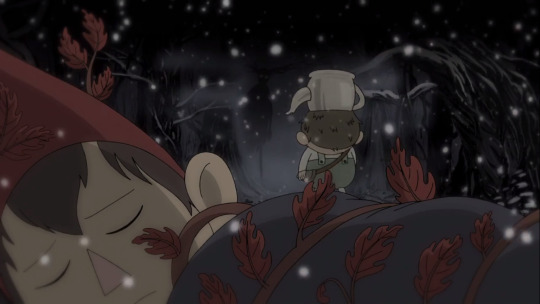
Either way, we cut back to Wirt instead of Greg when the dream ends, and he’s still annoyed as he’s trying to sleep. Greg’s strange new seriousness is already cause for concern, and asking Wirt to take care of the frog is even more alarming, but even that doesn’t compare the horror of realizing where he’s actually going. Or rather, with whom.
This is another reason why I think the Queen is an ally: while it’s obviously dangerous for Greg to go with the Beast, that’s what it takes for Wirt to snap out of his funk. It’s a hell of a gambit, but as soon as he starts to awaken, he’s immediately concerned for Greg’s safety despite whatever anger or resentment he had, sparing no time or thought to the branches creeping over him as he runs after his brother.
The quiet distortion as we follow his frantic search is soon met by the Beast’s song, but even as he blames himself for Greg’s plight, Wirt is no longer content to wallow in despair. Because it turns out that these brothers are more similar than they seem, and neither is truly capable of letting the other suffer. In the folk tale for which this episode is named, two children abandoned in the woods eventually die and are covered in leaves by small birds (with some versions seeing them enter heaven), but as we’ll see in our next episode, this isn’t a folk tale.
The thrumming noise intensifies as Wirt slips on the ice, then we add visual distortion as he plummets into the freezing water. He’s saved, but this isn’t water that sees him reborn: the distortion finally breaks as Beatrice asks the episode’s terrible question, and we’re left in the cold.
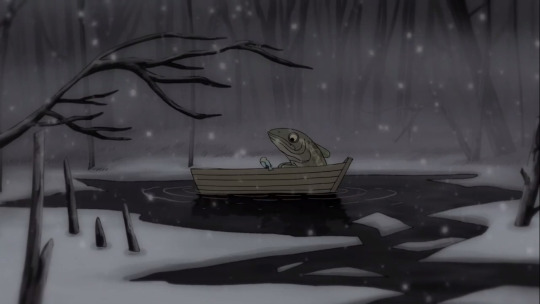
Every even-numbered episode of Over the Garden Wall, perhaps by virtue of airing twice per night, ends in a mood-setting cliffhanger that grows tenser and tenser with every iteration (or at least it does until the end). First we got a leaf symbolically caught in a fence, then the Beast’s introduction, then the fallout of Adelaide, and now the capture of Greg. Getting trapped has always been a threat for these roving heroes, but the greatest threat of all, that of Wirt trapping himself, has been handled. Things look bleaker than they ever have, but despite the glee of Greg’s dream contrasting with the harshness of reality, Wirt’s ability to climb out of the pit of despair keeps hope alive: even in absence, Greg’s influence looms large.
Rock Factsheet
Dinosaurs had big ears, but everyone forgot because dinosaur ears don’t have bones.
Where have we come, and where shall we end?
Most of these were mentioned in the main analysis, but it’s great that we hear Wirt’s description of Into the Unknown right before the episode itself shows us what happened.
#babes in the wood#over the garden wall#otgw#steven universally#winsor mccay#little nemo in slumberland
116 notes
·
View notes
Text
The MCU (So Far) Ranked
With Avengers: Endgame right around the corner now feels like a good time to talk about all 21 films that brought us to this moment.
#21 - Thor: The Dark World (Alan Taylor)

Rating - 3/10
Look, there always has to be one.
Thor: The Dark World suffers from the same problem that most bad comic book movies do it is simply forgettable, this is the worst type of film to write about because I have noting to say. Far from being insultingly bad but also far from being any good. Honestly if you ever plan on cramming these films again do yourself a favour and skip this one.
#20 - The Incredible Hulk (Louis Leterrier)
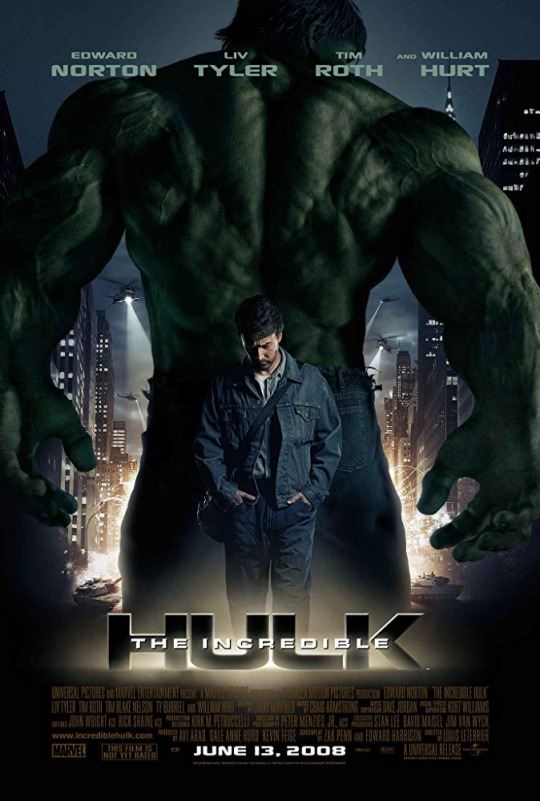
Rating - 4/10
You can skip this one too.
The Incredible Hulk is a product of its time, in the late ‘00s this was about as good as action movies not called The Dark Knight got. This one isn’t unwatchable and the bit were The Hulk kicks Tim Roth into a tree is pretty cool but given how little this film has effected the franchise going forward you really wont miss anything by skipping it.
#19 - Iron Man 2 (Jon Favreau)
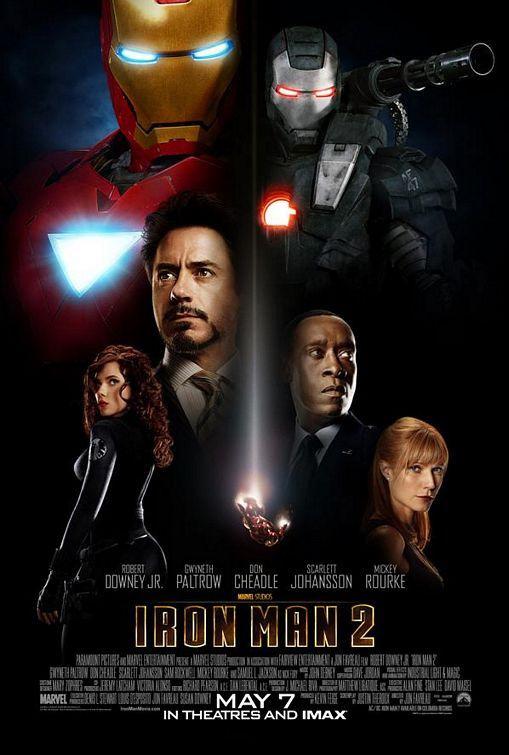
Rating - 4/10
I get why they made this movie, but I’d rather they hadn’t.
Iron Man 2 is basically just a teaser trailer for the better movies that were about to come out. This movie consists of boring conversations between Tony Stark and Nick Fury and even more boring scenes with the villains that really kicked of the cliché that these movies have boring villains. The suitcase Iron Man suit is really dope though.
#18 - Ant-Man and the Wasp (Peyton Reed)

Rating - 6/10
Meh.
Ant-Man and the Wasp is actually pretty good. Paul Rudd is allowed to fully explore his comedic talent making this a very watchable film however the script lacks any focus and it is ultimately difficult to stay invested in anything happening on screen. It’s a mixed bag but it’s pretty fun.
#17 - Thor (Kenneth Branagh)
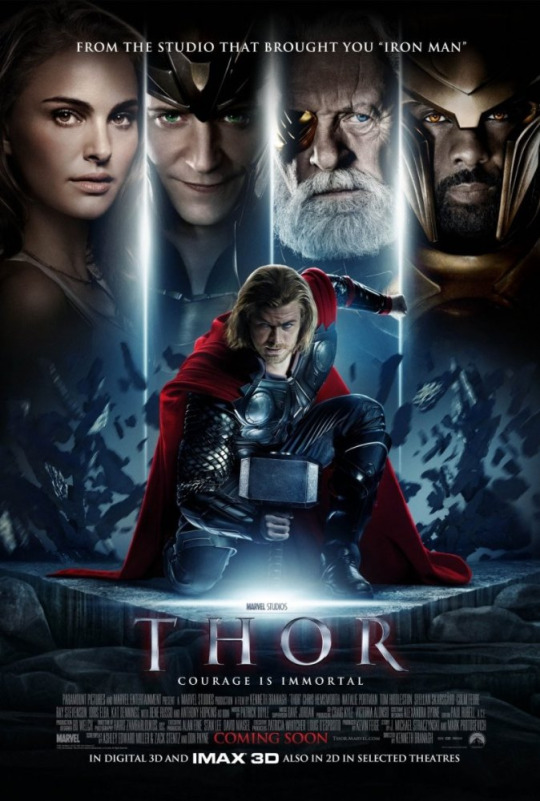
Rating - 6/10
Kenneth Branagh made a super-hero movie, this is about as good as that idea could ever have been.
Thor is a surprisingly small movie, revisiting this film now feels slightly strange given what we have since seen of the character. Branagh was always the wrong choice to direct a Marvel movie especially during a time were the studio had far more say than any of their filmmakers. It’s worth revising this film to set up the Avengers but other than that it isn’t anything special.
#16 - Avengers: Age of Ultron (Joss Whedon)
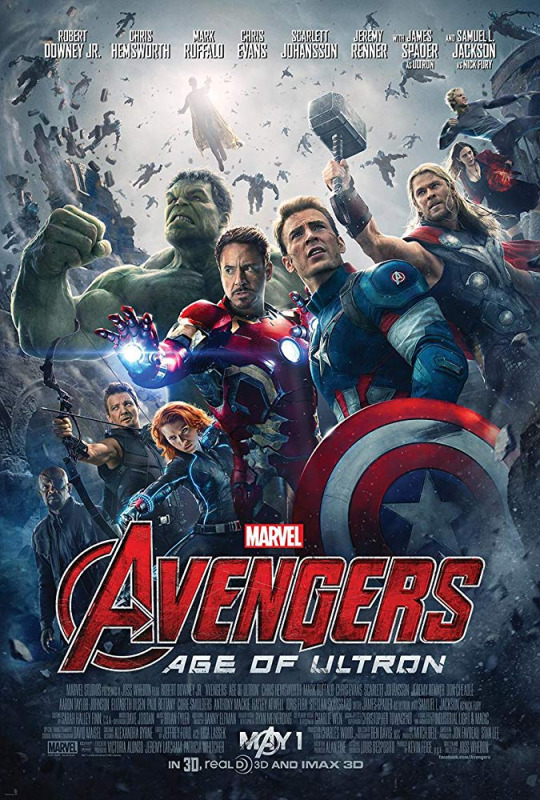
Rating - 6/10
It took me a long time to come to terms with the fact that this movie is just ok.
Avengers: Age of Ultron should be so much better than it is but it ended up being the poster child for when a studio gets cold feet and tries to take over on directors vision. Joss Whedon is an excellent story teller but this does not so off his talents at all. Once again this certainly isn’t a bad film it just isn’t great, there is some good dialogue and the introduction of both Scarlet Witch and Vision is worth seeing.
#15 - Captain America: The First Avenger (Joe Johnston)
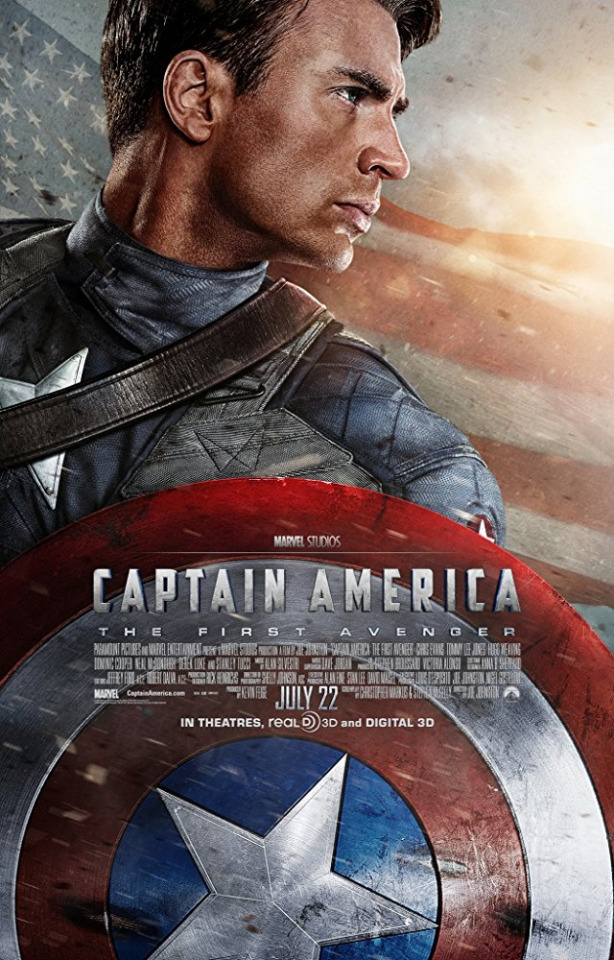
Rating - 7/10
Way more camp than I remember .
Captain America: The First Avenger feels as though it has taken the framework of a more conventional war drama and just thrown in some superhero stuff and I don’t necessarily think that is a bad thing. When this film embraces its campness it can be very entertaining. Chris Evans was a prefect casting choice for Steve Rodgers and this film does go in an unexpected direction by making Captain America basically just a mascot but once again the villain is weak and large sections of the plot are forgettable. Overall worth re-watching it is probably better than you remember.
#14 - Captain Marvel (Ryan Fleck, Anna Boden)
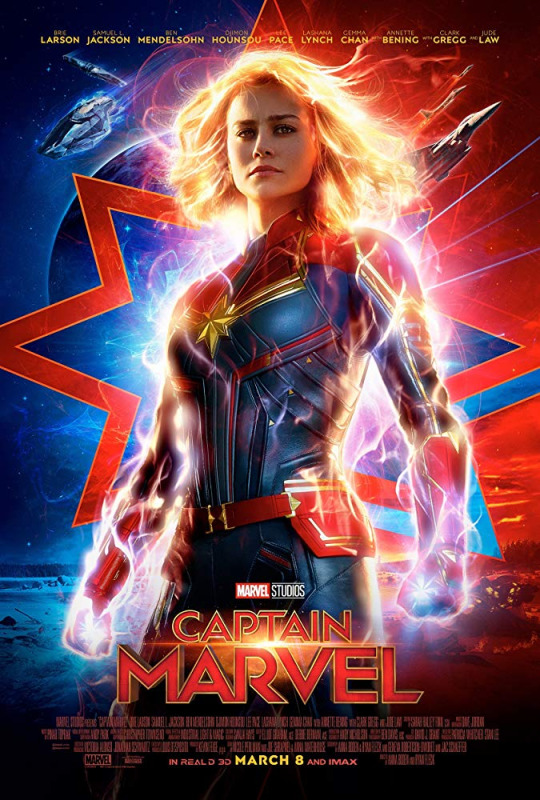
Rating - 7/10
I’m sorry, I like this one.
Captain Marvel might be the most controversial film in the whole franchise. I have some grievances with this one, namely lack of any style or originality in the writing or direction but the chemistry between Brie Larson and Samuel L Jackson helps to make this an enjoyable watch. I know you probably don’t agree with me but this is my list and I like this movie, so there!
#13 - Iron Man (Jon Favreau)
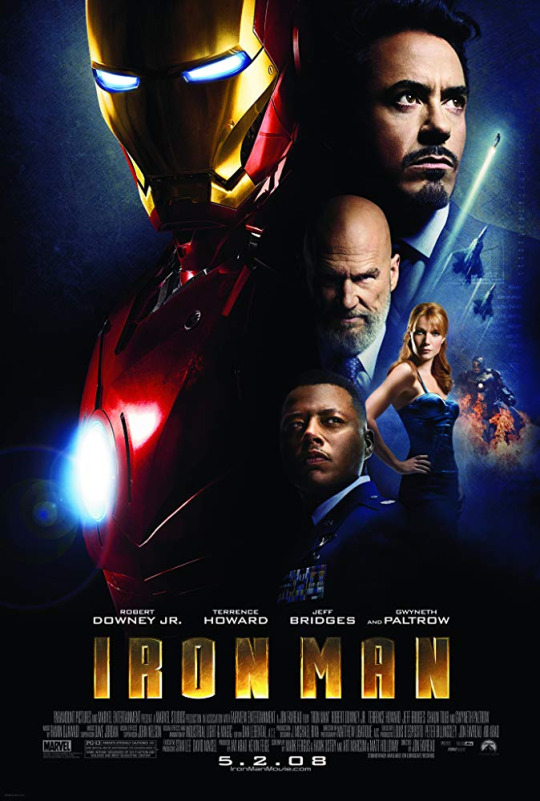
Rating - 7/10
Not as great as I remember but still pretty good.
Iron Man will forever be remembered as a film that changed cinema witch is so weird to me having re-watched it recently. This is a rather slow and somewhat cliché 2000s action flick with a paper-thin plot. Robert Downey Jr. and Jeff Bridges both give it their all and I have nothing but respect for Jon Favreau for turning RDJ’s mad ramblings into a coherent film.
#12 - Guardians of the Galaxy Vol. 2 (James Gunn)
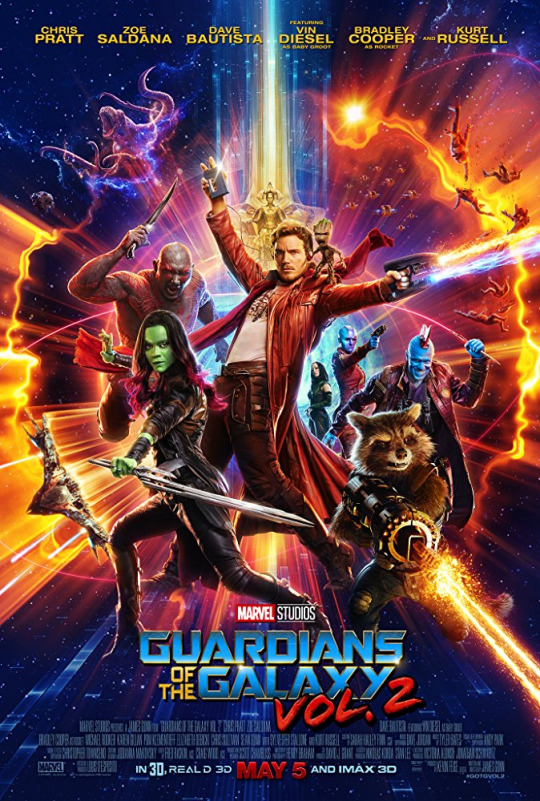
Rating - 7/10
I’m still not sure how to take this.
Guardians of the Galaxy Vol. 2 is the most visually stunning film in the MCU, almost every shot could be used as a laptop wallpaper. This also has quite possibly the strongest theming as its story about fatherhood and toxic relationships can bring a tear to your eye if you let it. So it is such a shame that this film is full of jokes that just do not land and weird side plots that feel like set-ups for movies that Marvel would probably never let James Gunn make. I kinda love this movie but this is as high as I can put it on this list.
#11 - Captain America: Civil War (Anthony Russo, Joe Russo)
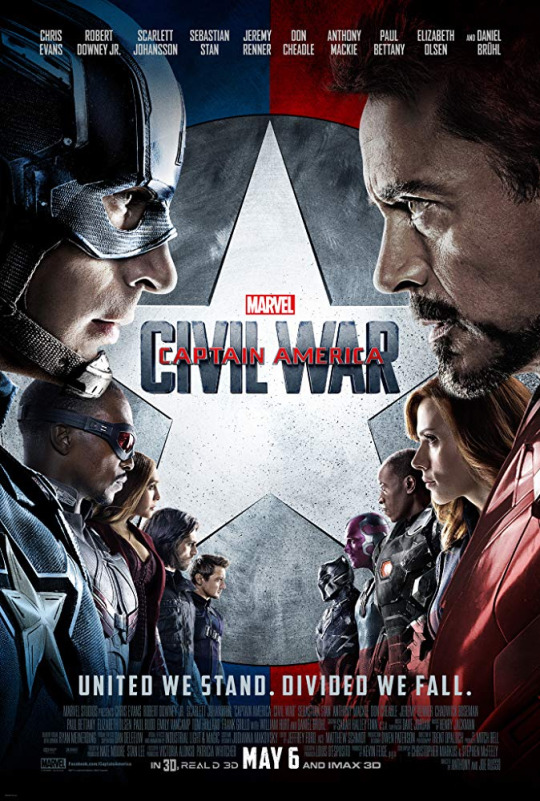
Rating - 8/10
The fight scene though!
Captain America: Civil War is one great fight scene that is all anyone ever wants to talk about. I think the rest of the movie is also pretty good, this was our first look at how the Russo brothers would handle a larger ensemble cast and every character gets the screen time they deserve. Really though the airport fight is amazing!
#10 - Doctor Strange (Scott Derrickson)
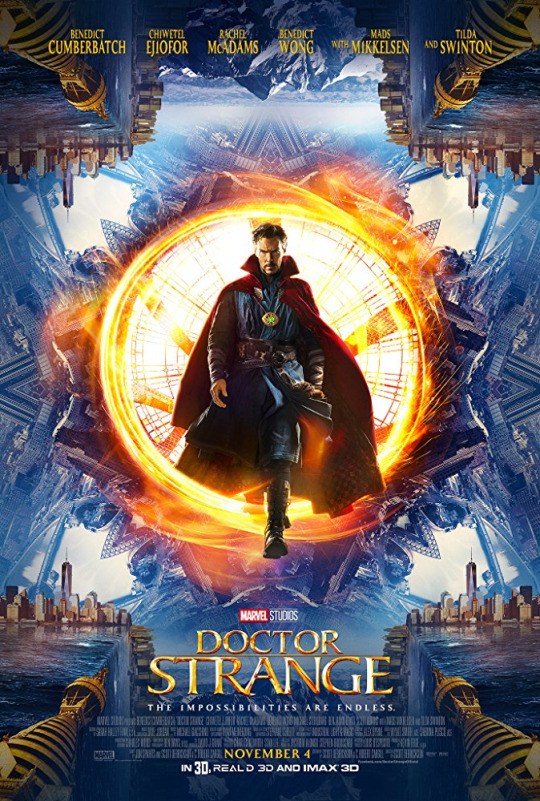
Rating - 8/10
The word Strange is in the title.
Doctor Strange has a remarkably safe plot given the source materiel, although that can all be forgiven given how amazing the visual effects are. This is a very entertaining film mainly for the creative and ingenious uses of special effects. This film can drag a bit but it is worth it to see something that gives the end of 2001 a run for its money.
#9 - Iron Man 3 (Shane Black)

Rating - 8/10
And you thought my views on Captain Marvel were controversial!
Iron Man 3 is great and I will not change my mind on that. This was the first team up between Robert Downey Jr. and screenwriter/director Shane Black since 2005′s Kiss Kiss Bang Bang and it was worth the wait. The dialogue is sharp and the plot with Tony Stark dealing with P.T.S.D. after the events of The Avengers makes for a great character study.
I am aware that the general consensus is that the plot twist sucks but with Ben Kingsley’s fantastic performance and the wonderfully absurd way that it is reveled I can’t help but love it. In all honesty I just to big a Shane Black fan to hate this (the same logic does not apply to The Predator).
#8 - Ant-Man (Peyton Reed)

Rating - 8/10
I can only image how great the Edgar Wright version of this would have been.
Ant-Man is so much better than people give it credit for. The dialogue is constantly funny and the screenplay is paced perfectly so that the film never has a dull moment even in the quieter character scenes. Moments like the train-set fight and the first time Scott Lang uses the Ant-Man suit are among the best scenes in the whole franchise. Like most people I have to believe that the Edgar Wright version would have been better but I must say that Peyton Reed did a pretty great job piecing what he had together.
#7 - Black Panther (Ryan Coogler)
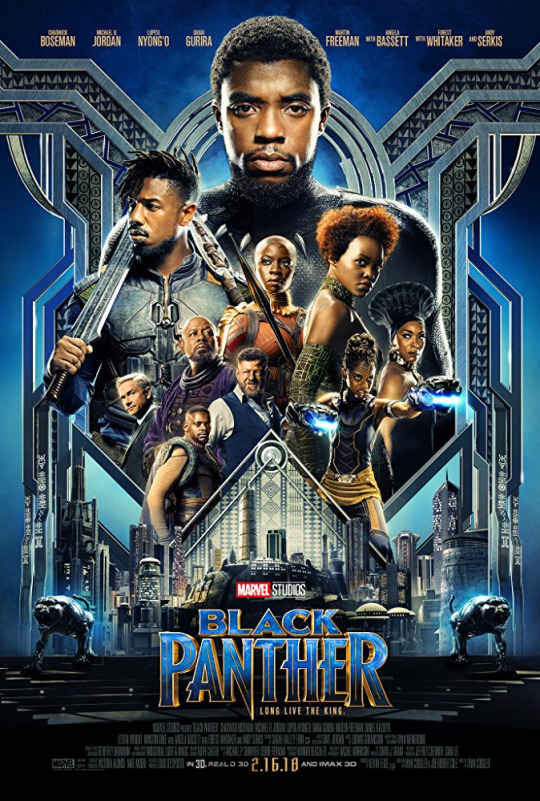
Rating - 8/10
Marvel’s little awards season darling.
Black Panther is somehow one of the most important and talked about films of the decade and in all honesty it sort of deserves it. Coogler does what other MCU filmmakers would never do and dives head first into real world political issue, ending his film with a poignant note about free trade and open borders. Michael B. Jordan as Killmonger adds a nuance that is missing in most comic book movies. Overall Black Panther is a breath of fresh air in an over-saturated genre.
P.S that soundtrack is awesome!
#6 - Thor: Ragnarok (Taika Waititi)
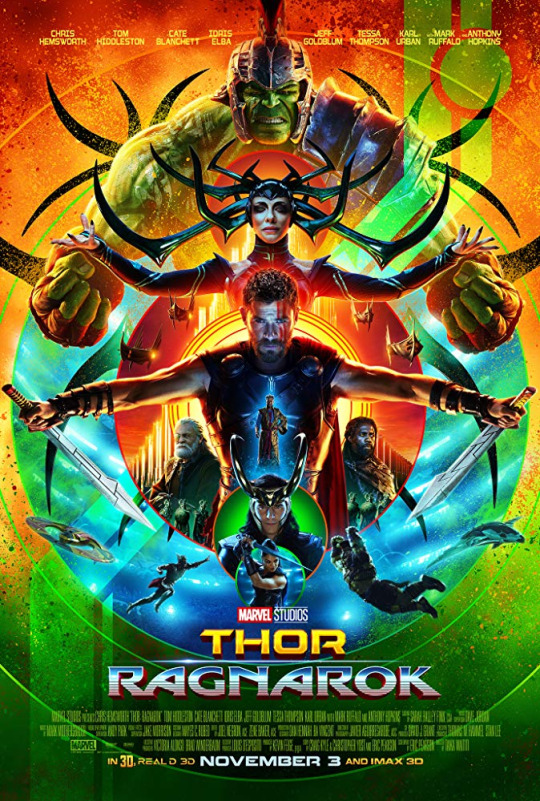
Rating - 8/10
How did this happen?
Thor: Ragnarok is everything I wanted it to be. Taika Waititi is one of the most interesting filmmakers working today and it is great to see a major studio allow such a unique voice to make the exact film that they wanted to without sacrificing their creativity. This is not only one of the best Marvel films but one of the best straight comedies of the decade. I cannot wait to see what Waititi has in store in the future.
#5 - Spider-Man: Homecoming (Jon Watts)
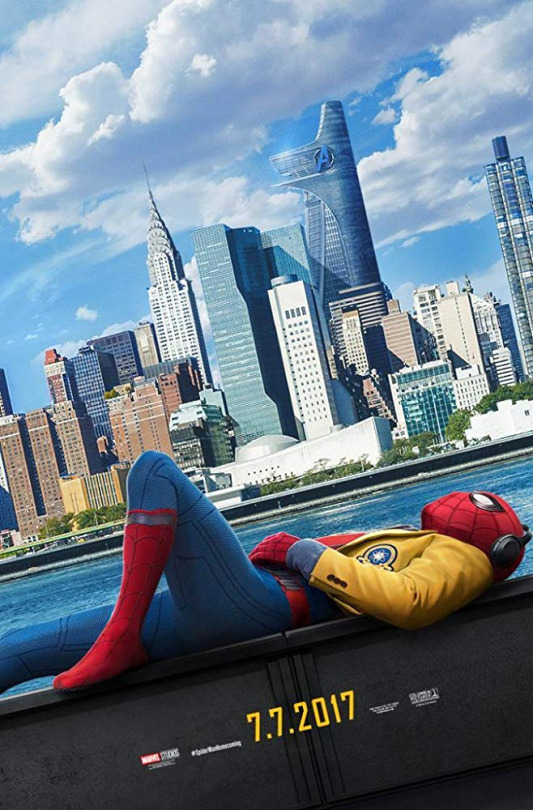
Rating - 8/10
Things are looking up for Spider-Man.
Spider-Man: Homecoming was my favourite Spider-Man movie up until very recently. This genuinely feels like watching an 80s John Hughes film in the 2010s that also happens to action sequences in it. The scene where Peter Parker and Adrian Toomes are in the car together is brilliantly tense and shows of the dramatic range of both Tom Holland and Michael Keaton. The characters feel real and fleshed out and the breezy feel of the editing brings the world to life through the naive eyes of a young Peter Parker. I honestly can’t believe how good this ended up being.
#4 - Avengers: Infinity War (Joe Russo, Anthony Russo)
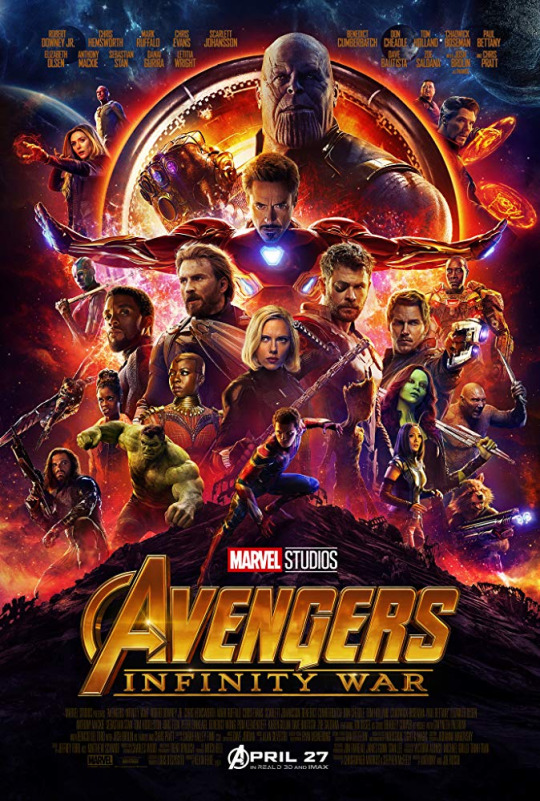
Rating - 9/10
This simply should not have worked.
Avengers: Infinity War is one of the most ambitious films in cinema history. I have so much respect for the Russo brothers for managing to make a film with this many characters and this many plot points feels cohesive and endlessly entertaining. I think the real triumph of Infinity War is how watchable and fun this movie is despite being 2 1/2 hours long, full of characters and constantly hitting you in the face with really depressing stuff. Let’s hope that the Russo brothers can pull of the same trick twice.
#3 - The Avengers (Joss Whedon)
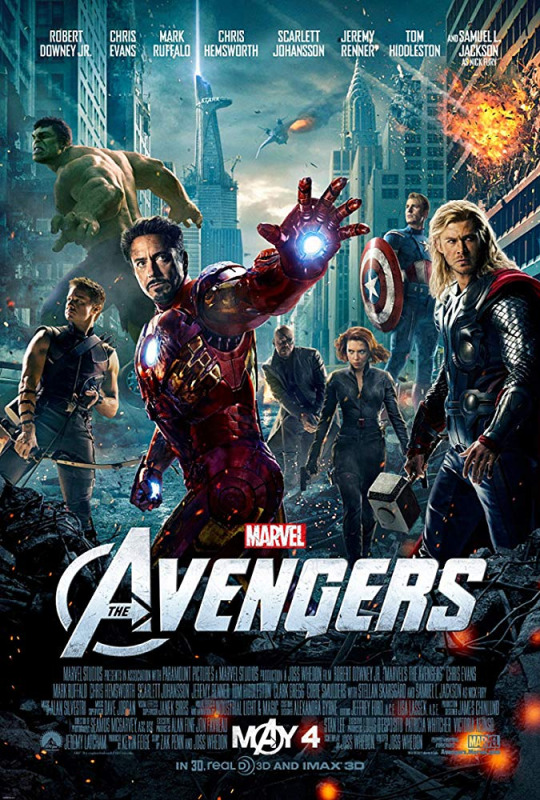
Rating - 9/10
This movie isn’t given enough credit anyone.
The Avengers was a huge gamble back in 2012 and although it may now feel quaint given the achievement that was last year’s Infinity War Joss Whedon was able change the landscape of blockbuster cinema and make this whole thing possible. Almost every plot point in this film has since become cliché, Whedon and Feige laid out a blueprint for success that no one else has been able to copy since. The Joss Whedon humour and snarky dialogue helped to pave the way that these characters would interact in the future and his unique approach to utilizing an ensemble cast makes this film worth revisiting over and over again.
#2 - Guardians of the Galaxy (James Gunn)
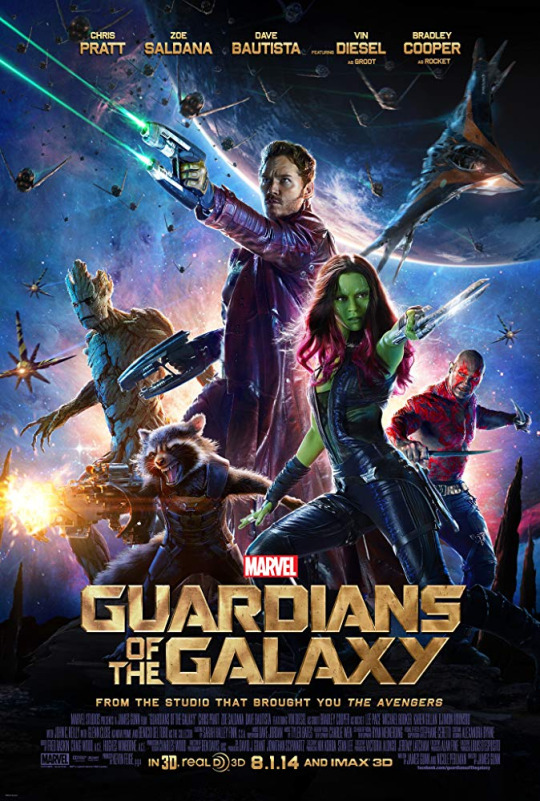
Rating - 9/10
James Gunn hit the mainstream with a movie about a talking raccoon, I can never complain about the Hollywood system ever again.
Guardians of the Galaxy should not work on most levels but Gunn was just crazy enough to pull it off. The character interactions here rival the Wheadon penned interactions in The Avengers and the Gunn’s direction brings the strange worlds he has created to live in striking ways. Gunn was given a chance to showcase his humour and he ran with it, Guardians goes from dark and meandering to fun and rapidly paced within seconds and it is a complete joy to watch no matter how many times you have seen it.
#1 - Captain America: The Winter Soldier (Joe Russo, Anthony Russo)
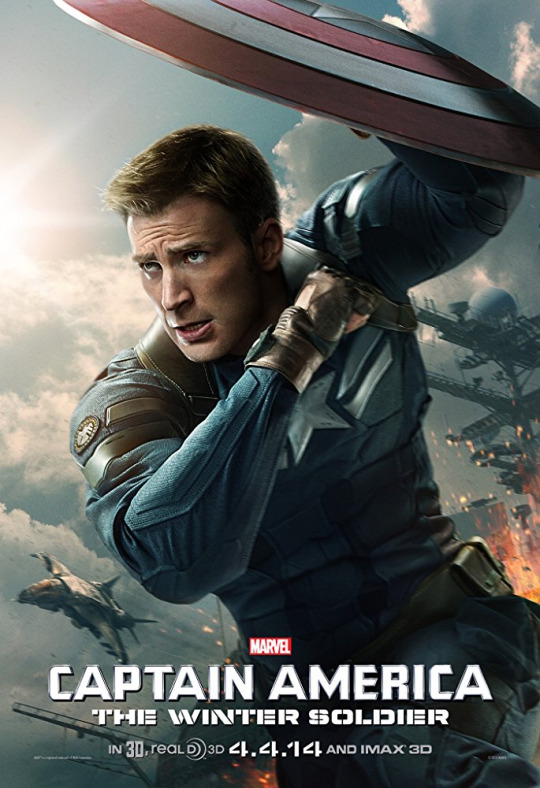
Rating - 9/10
The Russo brothers came out swinging.
Captain America: The Winter Soldier is an entertaining, tightly directed, brilliantly acted, fast paced and well edited action film that just so happens to be a squeal to the First Avenger. Many of the best moments in the franchise are in this film including the elevator scene and the fight on the bridge, this film also has great character interactions especially with Steve Rodgers and Nick Fury. This feels like an update on classic James Bond stories with a modern edge, this is everything that a comic book movie could be and I highly recommend checking it out again if you haven’t seen it in a while. There is no question that The Winter Soldier is the best of the MCU.
Franchise Rating - 7.1/10
Nathan Needs A Username’s Must See Movies: https://letterboxd.com/nathan_r_l/list/nathan-needs-a-usernames-must-see-movies/
Nathan Needs A Username’s Avoid At All Cost Movies: https://letterboxd.com/nathan_r_l/list/nathan-needs-a-usernames-avoid-at-all-cost/
#Marvel Comics#marvel cinematic universe#comic books#thor: the dark world#the incredible hulk#iron man 2#ant-man and the wasp#thor#avengers: age of ultron#captain america: the first avenger#captain marvel#iron man#guardians of the galaxy vol. 2#captain america: civil war#doctor strange#iron man 3#ant-man#black panther#thor: ragnarok#spider-man: homecoming#avengers: infinity war#the avengers#guardians of the galaxy#captain america: the winter soldier
24 notes
·
View notes
Text
How ‘Curtis’ Tackled the Coronavirus in a Newspaper Comic
Curtis © 2020 King Features Syndicate Inc., World Rights Reserved/Photo Illustration by The Daily Beast
In the closing weeks of March, comics pages in daily newspapers were oblivious. People were still making plans. There were parties. When animals talked, as animals in comics do, they said nothing about quarantines.
One of the first voices to speak of the new normal belonged to Barry Taylor Wilkins, the younger of two brothers in Ray Billingsley’s long-running strip “Curtis.” It was on Monday, March 30, and we see Barry and Curtis’ mother, Diane Wilkins, squeezing hand sanitizer on her boys’ hands.
“Why do I have to put this stuff on my hands, Mommy?” asks Barry.
In “Curtis,” it is common for such questions to have both simple and complex answers. Since debuting the strip in 1988, Billingsley has mixed lighthearted gags with occasionally stark portrayals of the Wilkins, a middle-class African-American family, and their larger community of family, friends, barbers, and teachers. In “Curtis,” realism sneaks up on you: the family’s third-floor apartment can feel cramped; the father, Greg Wilkins, is uninspired by his job; and young brothers Barry and Curtis have real stresses, like fear of guns in school.
On this day, Curtis tells his brother the sanitizer is to clean his fingers before picking his nose. But we know the real reason. So does Diane. The boys don’t. But that will change.
Little Nemo Was the Most Beautiful Comic Strip Ever Drawn
At four panels a day, time moves slowly in a daily comic, even when events in other newspaper pages move alarmingly fast. As March finally gave way to April, the Wilkins family were seen adapting to their little corner of the pandemic. There are jokes about home-schooling and cabin fever. Greg tries to cheer his sons up with a theatrical display of pancake-making, flipping them with a juggler’s flare. “I try my best to shield my boys,” Greg will say to Diane. “And that is why I love you always,” thinks Diane.
Curtis © 2020 King Features Syndicate Inc., World Rights Reserved
Then, in the middle of breakfast, the Wilkins’ lives change again. Curtis receives a phone call. He walks back into the kitchen, dazed. His stack of pancakes is still waiting for him, untouched.
Story continues
“It’s our teacher, Mrs. Nelson,” Curtis says. ��She tested positive for coronavirus.”
Curtis © 2020 King Features Syndicate Inc., World Rights Reserved
“I don’t want to start much trouble, but sometimes I can’t help myself,” Ray Billingsley told me in a recent phone interview from his home in Stanford, Connecticut, where he has been hunkered down with his basset hound, Biscuit. “It’s the artist in me.”
Ray Billingsley, the author of Curtis
Courtesy Ray Billingsley
Although a few new comics starring people of color have debuted in recent years, “Curtis” remains one of the few daily syndicated strips centered around black characters. Billingsley sees himself following in the tradition of Morrie Turner’s “Wee Pals” and Ted Shearer’s “Quincy”—and also Aaron McGruder’s “Boondocks,” but with a difference. “‘Boondocks’ was in your face, and he didn’t care how much,” Billingsley said. “The rest of us, we have to walk a tightrope.”
Billingsley tested that tightrope when the Wilkins family noticed that Barry was slipping milk out of the house. They thought he was feeding a cat but followed him and found instead an abandoned baby. In another strip, Diane miscarried after being assaulted at an ATM. “Nobody was expecting a miscarriage in ‘Curtis,’” Billingsley said.
One of the slyest moments in “Curtis” happened when the Wilkins family and friends were invited to Dagwood and Blondie Bumstead’s house, as part of a celebration of the 75th anniversary of the comic strip “Blondie.” They took a wrong turn and ended up in Mary Worth’s neighborhood. There, they discovered how fast police response time can be in a different part of town.
Billingsley often pushes against his six-week deadline to allow him the chance to comment on current events. Yet the experience of drawing “Curtis” during COVID-19 feels different than anything he has done before. “This one I’m going by instinct. I said, ‘It’s time to do it right now.’ I kept seeing that nobody was addressing this.”
Curtis © 2020 King Features Syndicate Inc., World Rights Reserved
I asked if he felt a special weight in his decision to have a character contract the illness. “Actually, I’ve been feeling the weight of this entire story,” he said. “I have to really get into what everyone was feeling. We’re talking about a core of four people and how it’s really affecting them as a unit. I’m not showing anyone else. It’s just about this family right now.”
“This has been one of the harder ones to draw. I had the flapjack party going on and I knew something was going to come up. When Curtis comes into the room, it hit me then, too. It made me depressed. I do it to myself. They’re so much from the heart that they can hurt me first. If I’m hit on an emotional level, I’m pretty sure other people will be too.”
People don’t usually die on the funny pages. It’s only possible in what’s called a “continuity” strip, one in which a narrative might stretch over many days or weeks. After all, Beetle Bailey can get beaten to a pulp and spring back up the next day, and nobody questions it. “In Beetle’s world, it doesn’t matter who’s president, or what kind of disease is going around,” laughed Billingsley, who counted the late “Beetle Bailey” creator Mort Walker among his friends.
The first major character to die in comics was Mary Gold, who in 1929 contracted a mysterious illness in the comic strip “The Gumps.” Since then, deaths have remained rare. In 2004, it came for the elderly Phyllis Blossom Wallet in “Gasoline Alley.” Garry Trudeau’s “Doonesbury” has featured several deaths, most controversially that of Andy Lippincott, who died of AIDS in 1990. Letters from readers poured in after the death of the family dog Farley in Lynn Johnston’s “For Better or For Worse.”
You didn’t see any death scenes in the comics page during the so-called Spanish Flu pandemic in 1918. Comics scholar Jared Gardner began searching through hundred-year-old newspapers for any comics that dealt with the outbreak and was surprised by how little he found. “Lots of words, lots of typing, but not lots of drawing,” Gardner said, speaking via Zoom from his home in Columbus, Ohio, where he serves as director of Popular Culture Studies at Ohio State University.
Public Domain
Gardner put what he did find on his website “Drawing Blood,” which is dedicated to comics and medicine. There is a single Bud Fisher “Mutt and Jeff” comic with the punchline “I went home last night and opened the window and in flew Enza.” A few comics discuss wearing masks and avoiding crowds. Some subscribe to the xenophobia suggested by the misnamed “Spanish flu.” Others lightly mock it, as in George Herriman’s “Krazy Kat,” in which Krazy dreams of a Spanish bullfight and wakes up the next morning with the flu, which “may or may not disprove the ‘germ’ theory,” as Herriman wryly notes.
Public Domain
Gardner suspects that the oversized cultural influence of comic strips in 1918 might be why there were so few mentions of the flu. Cartoonists and their bosses knew they were being watched. As John M. Barry wrote in his history The Great Influenza, the Sedition Act promised jail time for anyone who dared “print, write or publish any disloyal, profane, scurrilous, or abusive language about the government of the United States.” This even extended to “pessimistic stories,” and the trial of leftist cartoonist Art Young for violating the Espionage Act had proven that the government reach might extend to cartoonists.
It might have just been that most cartoonists didn’t think people wanted to see the flu in the funnies. Still, the few that did address it have a lesson to teach us. “It must have felt like the end of the world for these folks as surely as this time does for us,” Gardner said. “It can feel unprecedented and apocalyptic, but looking at comics from a hundred years ago reminds us that they got through it.”
The first widely syndicated newspaper comic to address COVID-19 was Bill Hinds’ “Tank McNamara,” a sports-themed strip that had to contend with the sudden absence of professional sports. “Curtis” followed shortly after. Cartoonist Stephan Pastis often makes himself a character in his smart and acerbic “Pearls Before Swine”; he drew his first coronavirus comics as if he were stranded with nothing but pencil and notepaper, playing off his real-life situation of being out of the country when the United States starting limiting travel. Meanwhile, a heartbreaking series in Darrin Bell’s “Candorville” tackled social isolation by showing full-panel cityscapes from throughout the world. The same thought arises in different languages from each house and apartment: “I am all alone.”
Argentinian cartoonist Ricardo Siri, whose comic “Macanudo” is published in English under his pen name “Liniers,” says the strip was born out of time of social and economic crisis in Argentina. “My way of being punk was to be optimistic,” he said, talking to me by phone from his current home in Vermont, where he teaches at Dartmouth College. His coronavirus-themed work has been delicate and hopeful, often turning to the natural world for inspiration. In one full-panel strip, a girl and cat sit together, watching a butterfly make its way across a grassy field. The caption reads: “Taking care of each other will also be contagious.”
“I feel like when people are drowning, you can either throw them a life vest or an anvil,” Siri said. “Every now and then I allow myself to be angry in the strip, or pessimistic, or nihilistic. But I think the reason the comics page first existed, from the Pulitzer and Hearst years, is to give people something so they don’t jump out the window.”
In a sense, the visual representation of COVID-19 is itself a cartoon—a multi-colored illustration of a spike protein-studded ball created by Alissa Eckert and Dan Higgins for the Centers for Disease Control and Prevention. (By contrast, Gardner notes that cartoonists in 1918 often used mosquitoes to represent the flu, due to the insects’ past association with sickness and death.) Eckert told The New York Times they were tasked with creating “an identity” for the coronavirus. But it took cartoonist Mark Tatulli to turn their image into a full-blown character. In Tatulli’s wincingly funny “Lio,” the Coronavirus might laugh menacingly or wait quietly in a doorway. In one chilling comic, it sits on the couch, watching the news. “It’s always weird seeing yourself on TV, ya know?” it says to a child.
To Gardner, these novel approaches to the novel coronavirus are a sign of hope for comics themselves. “If you want a media that can talk about it right now, and both comfort and educate, what does it better?” he said. “There’s social media, which is evil, and there are comics. It’s a moment where the comic strip, editorial cartooning, and web comics can talk about stuff as it’s happening, and they can build space for community in the moment—which is part of why comics and cartooning became so important in the first place.”
Added Gardner, “There’s a tone, a kind of intimacy, that the comic strip can capture that is really needed. I’m grateful for it.”
The most intimate moment in the current run of “Curtis” comes when Greg Wilkins is explaining to his son that because of social distancing, he can’t visit Mrs. Nelson in the hospital. Curtis pumps his fist and says, “Awwww, she’ll be all right!—Mrs. Nelson is a tough ol’ lady.”
Greg smiles and holds his son. He praises him for his positive attitude. What he doesn’t see—but what is clearly visible to readers—is that Curtis is crying.
I told Billingsley that this devotion of a student to a teacher reminded me of a series in Charles M. Schulz’s “Peanuts,” when Linus is watching his beloved teacher Miss Othmar during a teacher’s strike, and she falls down with exhaustion.
“Remember, only Linus was close to Miss Othmar,” says Billingsley. “Lucy wasn’t. It can be a very special bond between a student and a certain teacher.”
In fact, he said, Mrs. Nelson was the name of his own third-grade teacher. “I didn’t have the best home life, growing up. I had a father who was very strict. It got to the point where I looked forward to going to school, because I was away from my father. I was one of those weird kids who was good friends with the principal.
“Mrs. Nelson was the first person who told my parents I had a career in artwork. She encouraged me, and from that time on I kept drawing.
“So when Curtis put his head behind his father, I quietly cried to myself, because I knew I was going to do this.”
Since that moment, there have been jokes in “Curtis” about Curtis saying that he’s bored and being handed a mop and bucket, and of Greg admitting to his son that he misses “being at work complaining about being at work.” But Billingsley said he’ll be returning to the story about Mrs. Nelson. He doesn’t know exactly when. Just like when it started, he said, he’ll be going by instinct.
“When it’s time to wrap this story up, I’ll know it.”
Read more at The Daily Beast.
Get our top stories in your inbox every day. Sign up now!
Daily Beast Membership: Beast Inside goes deeper on the stories that matter to you. Learn more.
Source link
The post How ‘Curtis’ Tackled the Coronavirus in a Newspaper Comic appeared first on The Bleak Report.
from WordPress https://bleakreport.com/how-curtis-tackled-the-coronavirus-in-a-newspaper-comic/
0 notes
Text
5ive Things // 6.18.18
Happy June! Summer is literally a few days away and it certainly feels it: this weekend we saw temps in the high 80s with full sun. FULL! Finally! Leo and I had a busy weekend with a “food crawl”/scavenger hunt with my brother and sister-in-law (if you live on Long Island, check out Food Done It!) and then celebrated Father’s Day yesterday with our dads, but made sure we still found time to enjoy our new apartment complex/”backyard:”

heaven.
It’s been about a month since I’ve shared some things I’m loving, so besides the gorgeous weather, our new home AND my dad:

...here’s what ELSE I’m into these days:
Congratulations podcast. I recently got back into podcasts, and I’m all over the damn map with what I listen to -- it’s anything from true crime (just finished Dirty John--WOWZA), to pop culture/current events to comedy. And when it comes to comedy, Chris D’Elia’s material is right up my alley. If you’re unfamiliar with the comedian, he’s been on some network shows (does NBC’s ‘Whitney’ ring a bell?) and has also had several comedy specials over the years. He got my attention years ago because of his INSANELY funny and deranged Vine videos and I actually got the chance to see him live at Caroline’s in NYC back in 2013. Since then, I’ve continued to be a huge fan and follow his hilarious antics on social media (he’s liked a few tweets of mine, NBD). I knew he had a podcast but admittedly took WAY too long to check it out, and finally did a few weeks ago.
Guys.
I cry-laugh. I snort. I do that uncontrollable laughing thing when I’m on the train and don’t want to guffaw and make a fool of myself so instead, I start convulsing and feel like I could burst at the seams from laughter. ‘Congratulations’ updates weekly and Chris just kind of shoots the shit about random-ass topics, and I can’t even really articulate his humor because it’s SO SO unique. He essentially has made up his own language and way of speaking, does ridiculous impressions, and shits on EVERYTHING, constantly. I love it. My favorite part? He laughs (hard) at his own jokes, and that makes ME laugh.

What to Do When a Loved One Is Severely Depressed. Whoa, what a transition from comedy to...this. But, it’s apropos at the moment to talk about mental health and more specifically, the surge of people unfortunately taking their own lives lately. We saw it most recently with celebrities Anthony Bourdain and Kate Spade, but lest we forget there are countless other non-famous folks who are suffering out in the world as well. This topic makes people squirmy and uncomfortable and I get that, big time, but it’s important that we talk about it. And articles like this one from the New York Times are so insanely helpful for those of us who are in or ever have been in a position where our loved ones are clearly going through some serious heavy stuff and gives some really great pointers on how to navigate that. An excerpt:
Your brother has an enviable job and two lovely children. He’s still ridiculously handsome even though he hasn’t gone to the gym for six months. It’s tempting to want to remind him of all these good things.
Not only is that unlikely to boost his mood, it could backfire by reinforcing his sense that you just don’t get it, said Megan Devine, a psychotherapistand the author of “It’s O.K. That You’re Not O.K.”
“Your job as a support person is not to cheer people up. It’s to acknowledge that it sucks right now, and their pain exists,” she said.
Summer fashion. Oh man, we’re all over the place today. Let’s lighten the mood a little and talk summer fashion finds -- including what I call, “the non-jeans.”

In the summer, the last thing I wanna do is put some tight skinny jeans on -- NOOOOPE. It’s hot and sticky outside, and I might as well squeeze into some latex Batman suit. Pass. But for the days where you don’t feel like shaving your legs wearing a dress, it’s nice to have some non-jeans pants options. Enter: the options you see above (from left to right: Loft, American Eagle, ASOS, H&M). PS: culottes were NOT something I ever liked or thought I could rock, but...we’re doing this, I guess.
Between Two Ferns. Have you ever seen these before? It’s a Funny or Die video series that’s been on for YEARS and I can never seem to follow the cadence -- they used to upload them pretty frequently but now I feel like they pop up once a year. It’s always a nice surprise to see a new one, and they always make me laugh. The hysterical Zach Galifianakis hosts and the shtick is essentially him just being a total dick to his guests. Sometimes it’s so convincing I honestly can’t tell for SURE if it’s a joke. Most recently posted? An episode with the one & only Jerry Seinfeld:
youtube
do me a favor: watch this, but then also check out the ones from the past including guests like Barack Obama, Ben Stiller, Brad Pitt & more.
These 8 Innocent Email Clichés Aren’t So Innocent After All. Do you work in Corporate America/have an office job? If so, you’ll love this website that has office-related (sarcastic) humor and will totally relate to the content. This list of cliches really made me laugh because I’ve used ALL of them (you know I love me some Office Jargon) and sometimes you really, really wish you can say what you actually mean.

are you, though?
What are you loving this week?
#five things#5ive things#favorites#podcast#humor#comedy#fashion#ootd#five favorites#my favorite things#office#office humor#corporate america#funny or die#between two ferns#chris delia#chris d'elia#congratulations podcast#congratulations pod#summer#father's day#the cooper review#jerry seinfeld#zach galafinakas#mental health#suicide#anthony bourdain#kate spade
0 notes